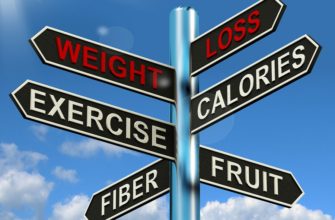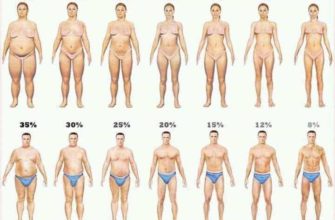For decades, cardio exercise has been the cornerstone of personal health and fitness. What is cardio exercise? It is any activity that raises your heart rate, gets you moving, and makes you sweat—like running, cycling, swimming, stairs and kettlebells. And yes, to a certain extent, chasing your kids around counts.
Scientific research shows cardio in a different light, especially when it comes to losing fat. Cardio remains essential to keeping our heart and lungs healthy, and to lower the risk of chronic diseases such as diabetes, heart disease and stroke.
Is it bad to do cardio every day? The answer is complicated.
Excessive cardio only can harm our health and derail our fitness goals. The risks associated with chronic injuries, fatigue, loss of sleep and pain are not worth the additional calories burned by pushing our bodies to the limit.
In this article, we’ll discuss the benefits of cardio and the signs that you might be overdoing it. As with any physical exercise, if you have specific questions or worries, it’s best to chat with a health professional who knows your personal circumstances.
- Cardio Has Plenty of Benefits
- 1. Keeps your heart healthy and strong
- 2. Increases your lung capacity
- 3. Reduces the risk of heart attack, stroke, diabetes, high blood pressure and cholesterol
- 4. Good for your mental health
- 5. Improves sleep
- 6. Fits into your schedule
- Balanced Cardio
- 5 Signs You are Doing Too Much Cardio
- 1. Muscle and joint pain
- 2. Low energy levels
- 3. Irregular sleep
- 4. Loss of motivation
- 5. Loss of performance and gains
- New Priorities
- How to Figure Out Your Ideal Amount of Cardio
- The intensity of cardio exercise
- Age, gender, health and fitness
- What are your fitness goals?
- Focus on quality cardio exercise instead of quantity
- Tracking workouts
- Know Yourself and Your Goals
Cardio Has Plenty of Benefits
Cardio exercise has lost a bit of momentum among fitness program coordinators, but I still find it essential to maintaining your health and fitness goals. The benefits of cardio for weight loss and general fitness are scientifically proven, for example, and that’s not about to change. But you definitely need to pay attention to the type and frequency if you want to maximize the benefits.
As with most things, more does not necessarily equate to better.
Here are six other advantages of a balanced cardio exercise regime:
1. Keeps your heart healthy and strong
One of the most important benefits of cardio. Keeping up with your training regimen and lifestyle takes work, and your heart needs to stay healthy and strong to provide your body with enough oxygen.
2. Increases your lung capacity
Taking care of your body also means maximizing your lung capacity. Research has shown that cardio exercise can improve lung capacity between five and fifteen percent. When doing cardio regularly, you shouldn’t experience shortness of breath as often, and your aerobic capacity should improve quickly.
3. Reduces the risk of heart attack, stroke, diabetes, high blood pressure and cholesterol
If you’re planning on living a long and healthy life, you shouldn’t overlook exercise. Lowering the risk of the chronic conditions and diseases mentioned is one of my priorities when it comes to health and lifestyle. Cardio exercise is a perfect way to stay active and swing the odds in your favor.
4. Good for your mental health
Mental health has taken center stage as one of the critical issues facing humanity in the modern world. Like millions of others, you may have suffered from excessive stress and loss of sleep.
Cardio exercise changes our brain chemistry, improving our confidence and sense of self-esteem. Cardio offers stress relief and can temporarily reduce the symptoms of depression.
5. Improves sleep
If done correctly, cardio has a positive effect on healthy sleeping habits. Recovery is essential for getting the best out of training and maintaining long-term health.
6. Fits into your schedule
Cardio exercise can be achieved in a variety of ways, either by using a machine at the local fitness center, jogging, riding a bike or playing sports. Most people can always find thirty minutes during the day for a meaningful cardio workout. It all counts, whether it is a quick jog in the morning or a game of hoops at the local court after work.
On the days when you feel up to a more challenging activity, consider a High-Intensity Interval Training (HIIT) cardio workout. It’ll give you a fantastic boost and helps you to reach your fitness goals quicker.
Balanced Cardio
The benefits of cardio exercise are indisputable.
Cardio is an essential part of any routine because it keeps your heart and lungs healthy, and it helps you to handle stress better. It is also a great motivating factor for staying on track with the rest of your fitness regimen.
A balanced fitness program should always include a healthy amount of cardio.
So, how often should you do cardio for optimal benefits? And how might you know when you’re doing too much?
5 Signs You are Doing Too Much Cardio
It is vital to balance the benefits of cardio with the risks that excessive cardio training can muster. Moderate amounts of cardio exercise are beneficial to our overall health and fitness level, while excessive cardio exercise can lead to injuries and loss of motivation. It can even negate the effects of our training.
Paying attention to what your body is telling you is vital. Knowing when to cut down on cardio is a critical skill that can improve your health and maximize the effects of your training.
A sign of an experienced athlete is someone who has learned to listen to their body. They know when to push and when to lighten up.
These are five clear signs that you are doing too much cardio:
1. Muscle and joint pain
If your muscles and joints are constantly sore, it is a clear indication that you have been putting too much stress on your body. Experiencing muscle soreness from time to time is normal, especially if you are diversifying the intensity of your training or introducing new exercises.
When your regular cardio routine is making you feel sluggish and sore, though, it usually means that you’re overdoing it or not allowing your body enough time to recover.
2. Low energy levels
Feeling constantly tired is a sign that something has to change in your training program. Excessive cardio exercise can negatively affect the energy levels of healthy people, and it is all about finding a balance.
Whenever you feel that you can’t get through the day without taking a quick nap or taking plenty of short breaks, consider that you may need to lower the frequency and intensity of your cardio.
3. Irregular sleep
Plenty of factors can affect sleeping patterns, including diet, exercise levels, stress and health aspects. Excessive cardio exercise produces a lot of cortisol, a stress hormone. High cortisol levels have a negative effect on falling and remaining asleep through the night.
Most people have had their fair share of sleepless nights, and maybe times where nothing seemed to work when attempting to fall asleep. Giving your body more time to recover and cutting down on cardio can help significantly with this issue. Insomnia may become a less frequent problem, and you should wake up feeling refreshed and energized.
4. Loss of motivation
There are no words to adequately describe the feeling of having to go to the gym when you don’t feel like it. It’s how you can expect to feel when your training program is negatively affecting your health and causing your moods to fluctuate.
You can expect to make plenty of mistakes creating a training program that is suited to your goals, health and lifestyle. You need to be able to adapt to the situation. If a program is unbalanced, you may find that you quickly get bored and start dreading the time that you spend at the gym.
Ideally, your training program should keep you in check, optimize your health and fitness goals, and still maintained those high motivation levels that keep workouts enjoyable.
5. Loss of performance and gains
Whether you’re trying to build muscle or lose fat, a prolonged absence of improvement in training performance and fitness gains is always a sign that your training program is flawed. Cardio is usually the biggest offender, and there is conflicting information available about what the advisable amount of cardio is.
Overtraining can seriously affect training performance and even negate muscle gains.
New Priorities
Consider prioritizing my health and long-term fitness goals. Sometimes you may feel that you’re not getting there quick enough, or that your program is not working. Rarely is the answer that you are not doing enough cardio.
Following any exercise routine will result in both highs and lows. Expect to feel sore, miss workouts, or spend nights awake due to excessive cardio. The solution is to understand the potential symptoms and then adjust as necessary. Maintaining a healthy balance should always be your top priority.
How to Figure Out Your Ideal Amount of Cardio
It’s a difficult question to answer without getting into details about the ideal level of cardio exercise for each individual. You fitness goals might be competitive in nature or simply to stay healthy and maintain your weight.
The amount of cardio that you need is entirely different depending on your individual goals. Whether you are a recreational or professional athlete or even someone just starting their fitness journey, do what is right for you.
Here are a few aspects to keep in mind when trying to determine your ideal amount of cardio:
The intensity of cardio exercise
Intensity directly affects the amount of cardio the body can handle. On average, a moderate-intensity cardio exercise of two to two-and-a-half hours per week is more than enough for most people.
If you are doing high-intensity cardio, such as HIIT training, you might cut that amount by half. It is a highly individual choice, but a good guide for where to start playing around with the numbers.
Age, gender, health and fitness
All these factors play an important role when it comes to the ideal amount of cardio. Women tend to get better results through cardio exercise; therefore, a higher amount might be preferable than to their male counterparts.
If you’re starting your fitness journey, less cardio is recommended. Age evokes changes in our bodies – our metabolism slows, and our muscles and joints can take less punishment. A less intensive and shorter cardio program becomes necessary.
What are your fitness goals?
If you’re trying to lose fat and maximize muscle gain, keep cardio at a minimum to maintain a healthy heart and lungs. Someone training for the marathon, however, will have different (not necessarily healthier) priorities.
Focus on quality cardio exercise instead of quantity
Endless hours on the elliptical machine or exercise bike can be a nightmare when it comes to hitting the gym. The results those hours yield are never directly connected to the fitness goals that you set for yourself. You’ll find it find it more beneficial to set aside shorter periods for cardio exercise and to really make them count.
Tracking workouts
Tracking workouts can help you immensely in determining the amount of time you should spend on each form of exercise, including cardio. Try to record the important information about your workouts and keep an eye on your performance, especially during the days when I am doing more cardio.
Also, make sure you pay attention to how you’re feeling during day-to-day activities.
A decrease in performance and results is a clear sign that you need to modify your training schedule. You can set personal benchmarks and restest yourself from time to time in order to understand how your current level of fitness matches up with your historical levels.
Keep in mind that there is no perfect amount of cardio and that the amount of time and intensity of cardio exercise should change with your overall health and fitness goals. Strive to follow a balanced training program, where there is always room for cardio exercise.
Always make incremental adjustments to your training program to ensure you are receiving the maximum benefit from your workouts.
Know Yourself and Your Goals
It starts and ends with your body.
Your priority is to keep your body functioning at an optimal level. Our bodies respond to any stress we place on them, including exercise. The stress can be constructive and improve our fitness and health levels, or it can kill our gains and impede progress.
The best way to start a fitness journey is by outlining your goals.
If you want to gain ten pounds of muscle during the year, your fitness regimen might include more weight training with short intermittent cardio sessions. Alternatively, you might focus on cardio to improve your long-distance running.
Your fitness goals directly affect the type of exercise you should be doing. Build a custom training program and plan cardio sessions in detail to ensure the best results.
Always put long-term health first when it comes to exercise. Living a balanced and healthy life should be a priority. Keep a close eye on your diet and record all of your workouts. Optimizing this balance is critical to staying motivated and achieving the best results.
Cardio exercise is just one piece of the puzzle that you need to stay healthy. It’s vital that you’re not overdoing it or putting unnecessary strain on your joints and muscles.











Comments are closed.